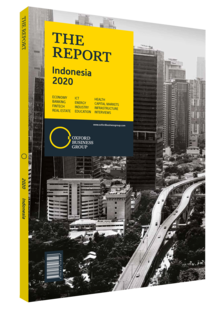Kiwi Aliwarga, Founder and Executive Chairman, UMG Idealab: Interview

Interview: Kiwi Aliwarga
How might agritech solutions help to mitigate the challenges facing smallholder farmers?
KIWI ALIWARGA: Technology offers many options to improve the continuity and sustainability of micro-, small and medium-sized enterprises (MSMEs) in the agriculture industry. A major fear for many farmers is crop failure; however, technology is available that can minimise the possibility of substantial losses.
A major stumbling block for all stakeholders in Indonesia is the inability to collect sufficient and reliable data. Data that might encourage efficient farming and crop optimisation is not yet available. Regardless, with the application of new technologies and streamlined cooperation, we are experiencing crop yield increases from between 20% and 100% year-on-year. The biggest obstacle to improving the industry is insufficient interaction between stakeholders. The agriculture sector in Indonesia has a complex network of actors. Whether they are farmers, cooperatives, NGOs, regional governments or the national government, each has their own interests and priorities. The social system needs to be aligned with technology to ensure that our agriculture industry flourishes, and the goal should be to ensure cooperation among all players.
We have globally benchmarked agritech solutions, but industry players integrate these technologies at different speeds. The Indonesian government is committed to ensuring the success of our farmers, but execution remains a problem. Therefore, the social system needs to be redefined.
In what ways do logistical hurdles impact the performance of the sector?
ALIWARGA: The realities of the value chain depend heavily on the segment it serves. With rice, for example, the government has a strong influence on the supply chain. They control the price, buy from farmers and influence the market. The margin of risk is very low for farmers, as there is a secure structure in place. In horticulture, however, there is no price fixing. There are many middlemen hampering the supply chain for vegetables and fruit. The reality is that between the farmer and the consumer, at least 40% of produce will be damaged. With the length of time it can take for produce to get from tree to table, as much as 30% could go bad, which is why Challenges include insufficient road infrastructure, poor handling of produce and limited hygiene practices in some food markets. However, there remains immense potential for the growth of the agriculture sector in Indonesia, especially considering the vast size of the archipelago.
As Indonesia’s population continues to grow, how can urban dwellers engage in food production?
ALIWARGA: Indonesians have a diet that consists primarily of rice and chicken. This is a well-established and mature segment of the market, with an advanced supply chain. The supply chains for fisheries and cattle, however, need improvement. We believe that it is necessary for Indonesians to diversify their diet and protein sources. We are looking, specifically, at urban production of prawn. There is technology in place that enables urban prawn farms to produce at least 250 prawns per cu metre, and the size of these farms vary from three to 10 cu metres. However, for prawn production to be profitable, there must be 400 prawns per cu metre.
The technology to make this possible has recently become available, but has not yet been completely embedded within the industry. Urban farms that effectively use this technology are fully automated and able to regulate themselves. Soon, the technology will be implemented in Yogyakarta in proximity to markets and restaurants, which we hope will encourage many people to become urban farmers.
You have reached the limit of premium articles you can view for free.
Choose from the options below to purchase print or digital editions of our Reports. You can also purchase a website subscription giving you unlimited access to all of our Reports online for 12 months.
If you have already purchased this Report or have a website subscription, please login to continue.

